The Difference Between a Heart Attack and Cardiac Arrest
When someone clutches their chest and collapses, the assumption is often: they’re having a heart attack. But hold up — it might not be a heart attack at all. It could be something far more immediate: cardiac arrest.
Despite being used interchangeably in casual conversation, heart attack vs cardiac arrest is not a matter of semantics — it’s a matter of life and death. These are two distinct medical emergencies with very different causes, symptoms, and treatments.
If you’re in a position to help (or to educate), understanding the difference can literally save a life. Let’s break it down.
What Is a Heart Attack?
A heart attack, or myocardial infarction, occurs when blood flow to part of the heart muscle is blocked, usually by a clot in a coronary artery. This causes damage to the heart muscle due to lack of oxygen.
Heart attack equals a circulation problem — it’s like a blocked pipe leading to a vital pump.
Common Causes of Heart Attack:
- Atherosclerosis: Plaque buildup narrows arteries.
- Blood clots: Sudden blockage on a ruptured plaque.
- Spasm of coronary artery: Less common, but dangerous.
Symptoms of a Heart Attack:
Recognising these early signs gives someone a fighting chance:
- Chest pain or discomfort (pressure, squeezing, fullness)
- Pain spreading to arm(s), jaw, neck, or back
- Shortness of breath
- Cold sweat
- Nausea or light-headedness
- Extreme fatigue
Some heart attacks are “silent” and show minimal symptoms, especially in women, diabetics, and older adults.
What Is Cardiac Arrest?
Cardiac arrest is when the heart suddenly stops beating altogether due to a malfunction in the heart’s electrical system. No electrical signal means no pump, which means no blood flow to the brain, lungs, or body. It is sudden, unexpected, and deadly within minutes if untreated.
Cardiac arrest equals an electrical problem — not a blockage, but a total blackout.
Common Causes of Cardiac Arrest:
- Arrhythmias, especially ventricular fibrillation (VF): The heart quivers instead of pumping.
- Severe heart attack: A heart attack can trigger cardiac arrest.
- Electrolyte imbalances: Low potassium or magnesium.
- Drug overdose
- Severe trauma or blood loss
- Congenital heart defects: Common in young athletes.
Symptoms of Cardiac Arrest:
Cardiac arrest is instant:
- Sudden collapse
- No pulse
- No breathing
- Loss of consciousness
- May be preceded by gasping or sudden chest pain, but not always
Can a Heart Attack Cause Cardiac Arrest?
Absolutely. A severe heart attack can trigger a fatal arrhythmia, such as ventricular fibrillation, which causes cardiac arrest. In fact, this is one of the most common pathways from heart disease to sudden death.
But not all heart attacks cause cardiac arrest, and not all cardiac arrests are caused by heart attacks.
First Aid Response: What To Do
💔 If You Suspect a Heart Attack
Call emergency services immediately.
Keep the person calm and seated.
Offer aspirin (if they’re not allergic or contraindicated) to reduce clotting.
Monitor closely in case the situation escalates to cardiac arrest.
⚡ If You Suspect Cardiac Arrest
Check responsiveness and breathing — if unresponsive and not breathing normally, assume cardiac arrest.
Call emergency services.
Start CPR immediately — push hard and fast in the centre of the chest (100–120 compressions per minute).
Use an AED (defibrillator) as soon as possible and follow voice prompts. Early defibrillation can restart a stopped heart.
Pro tip: If you work in high-risk environments like security, remote sites, adventure tourism, or forestry, having CPR and AED training is essential. Seconds count.
How First Aid Training Can Save Lives
Knowing the difference between a heart attack and cardiac arrest is crucial — but knowing what to do in the moment is even more important. This is where first aid training becomes a true lifesaver. Whether you’re on a building site, a remote trail, or just out with the family, being trained in CPR, AED use, and early recognition of cardiac symptoms gives you the power to act — and potentially save a life.
At Optimal First Aid, our First Aid at Work (FAW) and Emergency First Aid at Work (EFAW) courses are built to prepare you for exactly these kinds of medical emergencies. From practical, hands-on CPR to recognising red-flag symptoms, our training equips you with real-world skills that make a difference when time is critical.
Final Word: Know the Difference, Save a Life
Understanding the distinction between heart attack vs cardiac arrest isn’t just medical trivia — it’s life-saving knowledge. A heart attack gives you a warning. Cardiac arrest doesn’t.
Here’s the deal:
Heart attack is a blocked blood flow. The person may still be conscious. They need urgent hospital treatment.
Cardiac arrest is a sudden electrical failure. The person is unconscious. They need CPR and defibrillation immediately.
If you’re likely to be first on scene — whether you’re working in remote environments, high-risk jobs, or just hiking with mates — being trained and prepared isn’t optional. It’s your responsibility.
View our First Aid Training Courses.
Contact Optimal First Aid
If you have any questions or queries – or need some advice about any of our courses, please contact us

